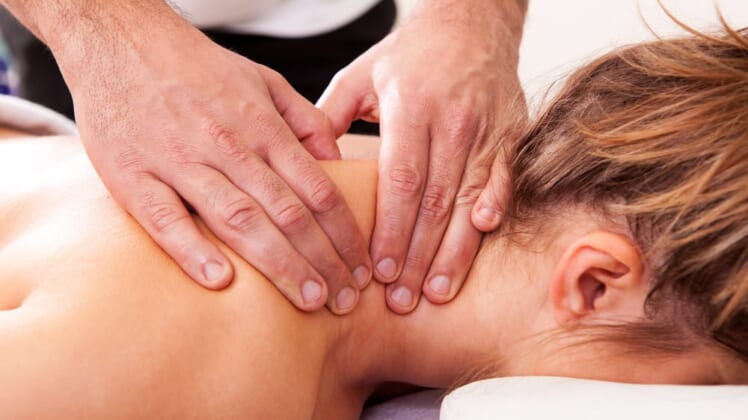
Massage is a popular form of relaxation and therapy for the body and mind. There are a number of different kinds of massage and each one can help with a specific problem, or help you achieve a certain state.
Massage can be used as a therapy for:
- Relaxation.
- To treat physical injury.
- As a treatment for long-term illness.
- To combat stress and anxiety.
- To improve circulation.
- Problems with sleeping.
But, while the benefits of massage are well-know and oft-discussed, what about the other side of the coin? While massage can be helpful, it can also be harmful. That’s why you should always seek professional advice, give honest answers to questionnaires and use a recommended or fully, qualified and experienced masseuse.
Can a massage hurt?
A massage can hurt. Sometimes a little pain comes with the territory. Deep tissue and sports massages, for instance, are known for being a little more forceful, but that’s because they’re designed to achieve particular things.
A deep tissue massage allows the masseuse to reach the deep muscle tissue under your skin and stimulate and promote better function of scar tissue. Sports massage is similar, but is used in order to flush away toxins, increase joint flexibility and reduce the risk of injury during exercise.
When it comes to these types of massage, if you’re prone to blood clots, they can do more than hurt you, they can cause serious problems. That’s because by stimulating the deeper muscle fibres and connective tissue, they can encourage a clot to release which has the potential to cause serious harm.
That’s one reason you should always ill in your pre-massage questionnaires honestly and thoroughly. And, if you are prone to blood clots, mention it to the masseuse too, just to be safe.
Breaking Free From Stress Fractures
Picking the right type of massage
As we’ve already stated, there are a number of different kinds of massage. They include:
- Deep tissue massage.
- Sports massage.
- Swedish massage.
- Hot stone massage.
- Shiatsu massage.
- Thai massage.
- Reflexology massage.
- Aromatherapy massage.
- Pregnancy massage.
In order to achieve the benefits you’re looking for from your massage, it’s best to do a little research. You should:
- Pinpoint what you want from your massage.
- Find out about the different types of massage and what each type is designed to achieve.
- Ask around for a reputable or recommended masseuse or health spa.
- Phone up and have a chat about what you want.
- If you’re still unsure, discuss the option of a short version of the massage you’d like.
- Lie back and enjoy the stimulation.
Massage Frequency
How often you have a massage depends on a few different details, such as why you’re having them, what your doctor says, your budget and your time. If you’re having massages for general recreational and relaxation purposes, then once a month or even less, is fine.
For sports and fitness reasons, anything from once a week to once a month is typical. But, if you’re recovering from a particular injury, you might be prescribed to have them more frequently – expert advice is required here.
For long-term problems, the frequency of your massages could be high in the beginning and then slowdown once your body and mind begin to respond and improve through the therapy of massage.
As you can, see it really does depend on each individual. But, if you’re planning on having massages often, it’s worth speaking to your masseuse and possibly you’re doctor to, just to ensure you’re not about to do yourself more harm than good.
